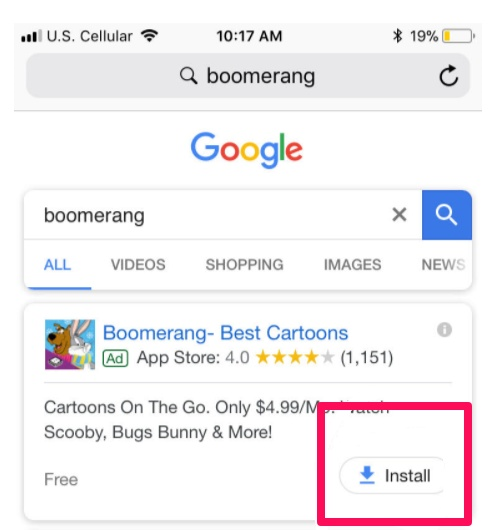Sending your data to our servers, please wait...





Oops... No results found.
Please try a different search phrase.
Paid Media 9 min read
Fed Fix: How To Use Google Ad Extensions
Written by Dallin Porter
Marketing Director @ Galactic Fed
Expert reviewed by Dallin Porter
Marketing Director @ Galactic Fed
Published 15 Oct 2020
As marketers, we know the ultimate goal is to have your audience take action. Action can look like a download, sign up, or the swipe of a credit card. The addition of Google Ad Extensions has been an excellent tool for any business promoting ads on Google since each extension increases the chance that someone will see your ad and feel influenced to act.
This article summarizes some of the most popular ad extensions, why they are so beneficial to your business, and how you can implement them into your paid media strategy today.
Why Ad Extensions?
Although a mammoth internet force, Google’s goals are quite simple: match the searcher with what they are looking for most effectively. Google Ad extensions are a perfect way to achieve this goal.
The purpose of these extensions is to display relevant information about your brand or business when someone is searching for it. They are a cost-effective way for your ads to gain prominence. And they have excellent results: on average, adding a single ad extension increases click-through rate CTR) 10-15%.
It’s not as simple as stuffing your ad with extensions, and incorrectly using them has its drawbacks. Ineffective or incorrect use of ad extensions results in lower ad relevance which means a lower quality score and ad rank. By not understanding each ad extension’s specific purpose and tailoring them to your business, you could be doing more harm than good.
That’s where the Google Ad experts come in. At Galactic Fed, we have set up thousands of Google Ads and have an in-depth knowledge of ad extensions, purpose, and benefit. Check out our Fed Fix on some of the most effective ways to enhance your ads today:
Sitelink extension
Arguably the most popular ad extension, sitelink extensions, are an easy way to improve your CTR immediately. Adding sitelinks boosts the average CTR on an ad by 10-20% (+20-50% when the search is one of your branded terms). If you’re not using them, you should start today. Sitelinks act as a mini-site map, since they are links on your ad that lead to specific webpages, perhaps a “contact us” page, or a particular line of products, as shown in the image below.
When thinking about which sitelink extensions to include, consider your buyer’s journey and where they may be in the marketing funnel. Then, identify where on your website that information can be found.
Sitelink extensions are easily updated and can be edited for time-specific information like a promotion or special offers. Not only can you customize them to give your audience exactly what they’re looking for, but they are also a great way to improve your ad relevance and quality score, which means you pay less for your ads.

Source: Search Scientists
Call extension
Another easy way to improve CTR is by adding a call extension. As you may have guessed, this is an extension allowing you to link your phone number, so that users can click and immediately speak with your business. This is especially useful for brick and mortar stores that rely on foot traffic or walk-ins, such as a hair salon or restaurant.
When a user searches and your ad is shown, a phone number is displayed that is clickable. You can set parameters in your Google Ads account that align with your business hours and track phone calls as conversions in your Google analytics.

Source: Growth Pilots
Call out extension
Taking advantage of callout extensions means that you can showcase unique offers, special promotions, and other features that differentiate your brand. For some businesses, callout extensions appear as “free shipping,” “next day delivery,” or “24 hour customer service.”
While not a clickable link, it’s a simple way to highlight offerings that make your business stand out or add value. Within your Google Ad campaigns, you can specify what day or hours of the week an extension is shown, allowing you to customize your ads to your audience. One thing to remember is to be as specific as possible, since you’re using limited ad real estate. For example, instead of saying “Great Prices,” say “40% Off Dresses.”

Source: Visibility and Conversions
Location extension
Location extensions are a feature that allows you to display your business address that users can view on a map. Like call extensions, they are especially beneficial to businesses that rely on foot traffic or walk-ins.
For example, if Adam owns a bike rental store, he can set it up so that when someone searches “bike rental nearby,” his ad will show either with the distance to his business (on mobile) or the exact location address (on desktop). When a user clicks on the address, they will be taken to an “about business” page with more information like phone numbers or photos. When someone makes a search query, they want to find the most accurate information as quickly as possible. Having this specific information can significantly impact people finding you and turning into a paying customer.

Source: Acquisio
Price extension
Price extensions are an easily implemented, high-impact way to provide additional information about your offer’s specific services and products. Essentially, it allows displaying more about your business in the form of particular prices. Price extensions can show up to 8 cards on a single ad that the user can view.
This is incredibly helpful if you know which of your products/services are sought after the most because you can display them prominently. Then, by clicking the price menu, the user will be brought right to the relevant page to make a purchase. It’s also a great way to promote the sale of a product or a great deal, providing a one-click shortcut to specific items you offer.

Source: WordStream
App extension
As you’ve probably guessed, app extensions are a great feature that allows you to link your mobile or tablet app to your ads. By 2020, mobile app downloads reached 284 billion (yes, with a “B”). It’s no longer uncommon for a business to have its own branded app to educate, inform, entertain, and allow customers to make a purchase.
When one of your selected keywords or phrases are used in the search query, your ad will display with a link to your app. Clicking this will bring the user to the app store description to learn about its functionalities and, most importantly, hit that download button. This feature has been fantastic for brands with in-app purchasing or companies who’ve recently released a brand new app and want to promote it.

Source: Neil Patel
Structured snippet extension
The structured snippet extensions allow you to showcase aspects of your business, organized by related groups. These are like callout extensions in that they aren’t a link you click, but give additional insight to the person searching regarding what you offer. It may also be used as a tool to teach the searcher of other services you offer, or that you may have several different locations. Structured snippet extensions have a “header” which must be chosen from Google’s predetermined categories. These categories are:
- Amenities
- Brands
- Courses
- Degree programs
- Destinations
- Featured hotels
- Insurance coverage
- Models
- Neighborhoods
- Service catalog
- Shows
- Styles
- Types
Once you select your header, you can input up to 10 items or values that are associated. For example, a hotel chain can list the individual locations that fall under “featured hotels” or a law firm can indicate which types of law they specialize in, under “types.” It’s vital to ensure your input values are associated with the header to avoid your ad being unapproved. Overall, it’s a great way to highlight similar features, products, or offerings, and they don’t cost anything to include in your ad (so what are you waiting for?)

Source: Store Growers
Now that you have a greater understanding of Google Ad extensions, it’s time to try them out for yourselves. If you use them wisely and correctly, you will see the positive impacts on your ad strategy and business overall. Still unsure how to successfully run Google ad campaigns? Contact us today and let us help launch your brand out of this world.

Dallin Porter
Marketing Director @ Galactic Fed



